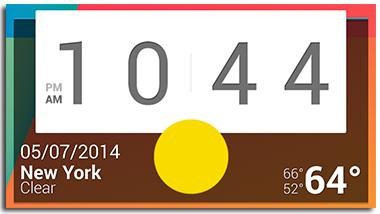
Back row, from left, Peachtree Audio Deepblue, Klipsch KMC3, Cambridge Minx Air 200; front Bowers & Wilkins Z2
(Credit:
Steve Guttenberg/CNET)
The continuing popularity of Bluetooth speakers mystifies me. The
under $50 ones sound pretty weak, but they have a good excuse: they're
cheap! Sadly, the $100 models aren't much better: they sound
undernourished next to my $52
Dayton Audio B652 stereo speakers, powered by my $25
Lepai LP-2020A+
stereo amplifier. Before we go any further let's put aside for a second
the question of how BT sounds; the biggest problem with BT speakers is
that it's just one speaker, and can't fill a room as well as two
speakers, spread five or more feet apart. Then consider that each B652
has a 6.5-inch woofer and a 5/8-inch dome tweeter; I've never heard a BT
speaker, even a $500 one, that has two 6.5-inch woofers; some don't
even have tweeters! Yes, the Lepai/Dayton system takes up more room and
has wires, but if you want decent sound for a rock-bottom price, there's
absolutely no comparison. Plug in a phone or iPod, and you're good to
go for $77.
Obviously, more upscale BT speakers sound better than cheap ones, so
for this blog I listened to four higher-end models, the $400
Peachtree Audio Deepblue, $400
Bowers & Wilkins Z2, $599
Cambridge Minx Air 200, and the $400
Klipsch KMC3.
The Deepblue was my favorite; it made the deepest and most powerful
bass and sounded fairly clear in the midrange, but I found the treble
grating and harsh. The Minx Air 200 was easier on the ears, it was the
most refined-sounding of the four BT models. The Z2 was a lot smaller
than the others, and still sounded OK.

My iPod Classic, with the left Audioengine A5+ speaker
(Credit:
Steve Guttenberg/CNET)
Some are quick to blame BT compression technology for BT speakers'
less than stellar sound quality. They're right; the speakers sounded a
little better when I didn't use BT and ran a $5.30 cable between my
iPod Classic
and the speakers. With the wire inline, sound quality improved, but the
BT speakers still left me cold, especially because there are
better-sounding alternatives for the same or fewer dollars. I hooked up a
pair of
$399 Audioengine A5+ speakers, placed six feet apart, plugged my
iPod into the left A5+ with the
25-foot cable,
sat on the couch, and enjoyed my tunes. The Audioengine speakers have
built-in amplifiers, 5-inch woofers, and 1-inch tweeters. One by one I
compared the A5+s with the BT speakers. Technically, the BTs are stereo
speakers -- they have two sets of drivers -- but since they are 12
inches or so apart, the sound was essentially mono. So they can't fill a
room as well as a pair of speakers. That's a very significant
limitation that even the highest-priced BT or AirPlay speaker can't
overcome.
The BT speakers play loudly, no problem, but the Audioeninge A5+s
sound better playing loud. The Peachtree Audio Deepblue made more bass
than the A5+s, but the Deepblue's bass sounded muddier than the A5+s.
Frankly, the best BT speakers sound like powerful table radios; the A5+
is closer to the sound of a decent hi-fi system.
Now sure, if you don't have the space for two speakers, or need the
wireless connection, go BT. But if you care about what your music sounds
like, consider Audioengine, Emotiva, or Adam Audio speakers.

No comments:
Post a Comment